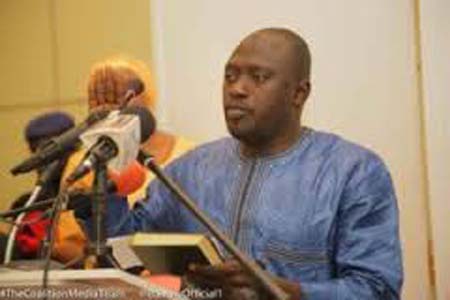
The
Gambia River Basin Development Organization (OMVG) has embarked on training
members of the National Monitoring Committee on the country’s hydroelectricity
project, to provide more energy and light for the nation.
The
two-day workshop, which took place on Tuesday and Wednesday (2 -3 May 2017), at
the Kairaba Beach Hotel, was organised by the Ministry of Environment and
Climate Change.
The
training included members of the National Monitoring Committee (NMC) and Local
Coordination and Monitoring Committees (LCMC).
It
addressed environmental and social management plans as well as resettlement
plans on the OMVG energy project.
The
Gambia River Basin Development Organization (OMVG) Energy Project is a
sub-regional organization made up of member states such as The Gambia, Senegal,
Guinea Bissau and Senegal.
OMVG
seeks to provide hydroelectricity resources for the member countries through
regional integration.
The
project, called ‘Sambangalou Multi-Purpose Dam’, will get technical and
financial assistance from Exim Bank from China at an estimated cost of
D1,147,462,262.
Speaking
on the occasion, the Minister of Environment and Climate Change, Lamin B.
Dibba, said the OMVG Energy project was born out of the desire to develop the
hydroelectric potential of the Gambia River Basin and the Konkoure River in
Guinea.
“The African development Bank (AFDB) provided
the OMVG with support to develop an energy progamme mainly at the Sambangalou
Hydroelectric facility on the Gambia River along the border of Senegal and
Guinea,” he said.
With
an estimated installed capacity of 128 megawatt (MW) and an average annual
production of 402 gigawatt per hour (GWh), the Kaleta Hydroelectric facility on
the River Konkoure in Guinea, with an installed capacity of 240 megawatts (MW)
and an average annual production of 946 gigawatts per hour (GWh), along with
the construction of a 225 node high voltage interconnection network of 1,677km
will link the electricity networks of the four OMVG member states.
He
elaborated saying: “This vital information to sensitise the committee on the
policies and procedures regarding the implementation of the EMSP and RP related
to the involuntary displacement of populations and the modalities of indemnity
and compensation of the populations affected by the project.”
He
further said the involvement of the committees is crucial in the implementation
of the landmark OMVG Energy Project.
Kabir
Silla Sonko, Director of Environment and Sustainable Development, said the OMVG
project is a regional structural project forming part of the priority projects
of the West African Power Pool (WAPP) and the Programmme of Infrastructure
Development in Africa (PIDA) of NEPAD.
He
said the total cost of the interconnection network is US$722 million was
secured from eight funders including Kuwaiti Fund and the World Bank.
He
added that they have concluded the assessments, negotiations and the signatures
of the contracts with the different contractors for the construction of the
interconnection lines.
He
said what remains is the liberation of the rights-of-way and the compensation
of the populations affected by the project (PAP) to enable these companies to
start the interconnection line for the period of 18 months.
The
national monitoring committees and the local coordination and monitoring
committees are to play a leading role in the implementation of the energy
project.
He
said the mission of these structures is to bring about administrative,
technical, environmental and social facilities in the implementation of the
project.
They
would also supervise at the national and local level, he said.
He
disclosed that training has already started in the Republic of Guinea and its
objective is to provide the administrative authorities with more information.



